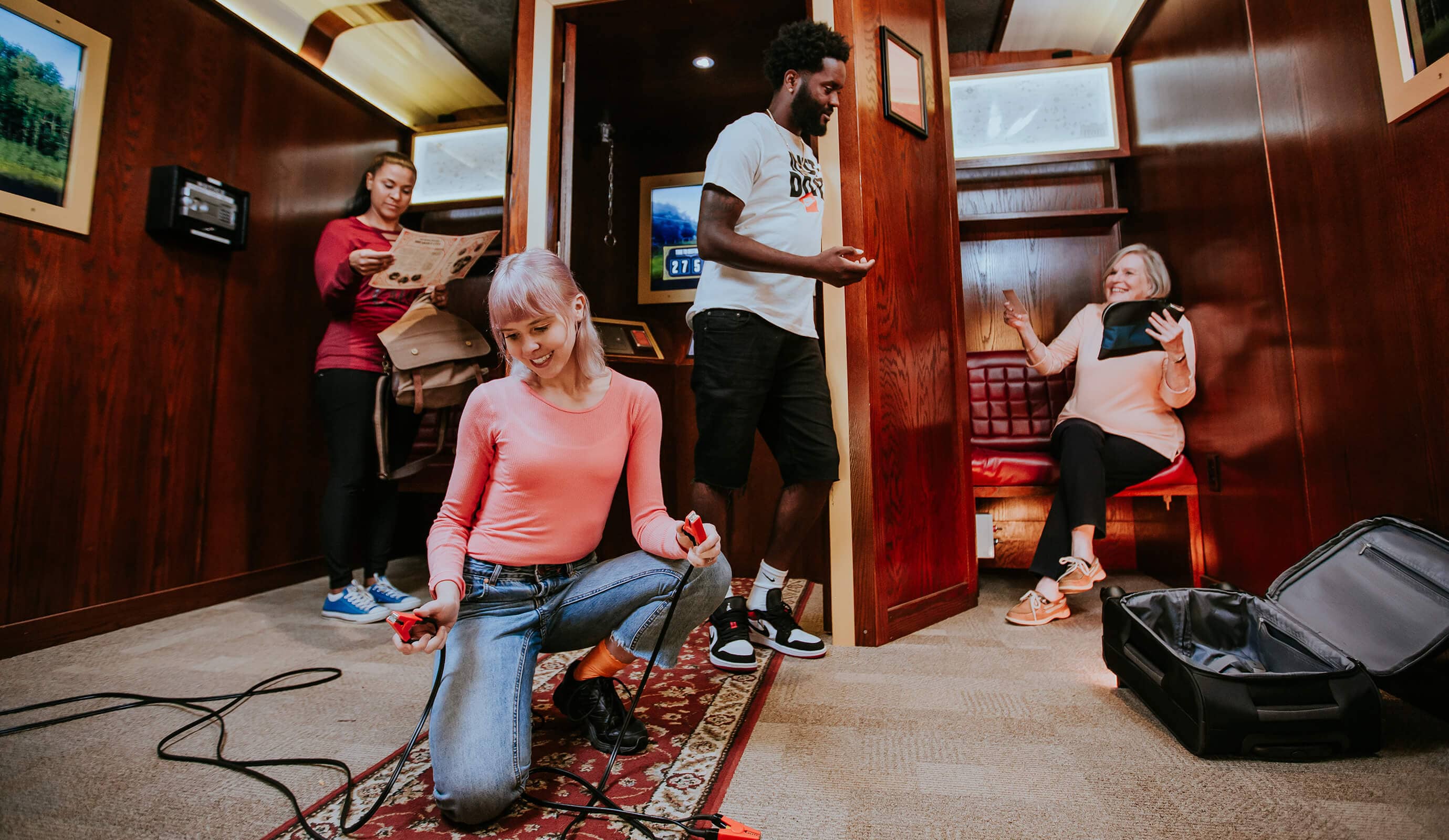The Ultimate Overview to Escape Room Austin TX: Your Next Journey Awaits
The Ultimate Overview to Escape Room Austin TX: Your Next Journey Awaits
Blog Article
Why a Getaway Room Is the Perfect Activity for Structure Stronger Relationships at Job
Getaway areas provide a distinct setup for boosting work environment partnerships by promoting communication, collaboration, and count on among group participants. What specific elements of an escape room make it so reliable for group building?
Boosts Group Communication
Integrating retreat areas into team-building activities can significantly enhance team interaction by giving an immersive and vibrant atmosphere where employees must team up to fix complex difficulties. The high-pressure, adrenaline-driven setting of an escape space requires group participants to connect plainly and effectively, often under limited time constraints. This requirement for precise communication helps break down barriers and urges open discussion, as participants need to share info, observations, and concepts rapidly to proceed.

Furthermore, the immediate comments loophole within retreat rooms-- where every activity has a direct repercussion-- enhances the importance of clear and reliable interaction. Teams learn to improve their interaction approaches in real time, enhancing their capability to share important information succinctly. These skills, focused the context of a getaway area, are straight transferable to everyday job situations, improving total team efficiency and cohesion.
Fosters Cooperation
Collaboration is the keystone of any kind of effective group, and getaway spaces offer an one-of-a-kind platform to grow this important skill. Within the high-stakes atmosphere of a getaway room, group participants are called for to function closely with each other to solve a collection of intricate problems and difficulties. This immersive scenario needs that people pool their diverse skills, expertise, and perspectives to accomplish an usual purpose.
Unlike traditional team-building exercises, retreat rooms give immediate comments on partnership initiatives. As participants progress through the area, they can see the straight impact of their cumulative initiatives, reinforcing the value of functioning with each other. The time-sensitive nature of retreat areas additionally necessitates efficient interaction and sychronisation, as any gap in synergy can result in failing.
Additionally, the varied series of tasks in an escape area guarantees that every employee has a chance to add meaningfully, highlighting the relevance of inclusivity in collaborative initiatives. By necessitating real-time analytic and decision-making, retreat areas develop a microcosm of the collective characteristics required in the workplace. This experiential discovering setting promotes more powerful interdepartmental connections, boosting overall business communication and performance.
Builds Trust and Confidence
Structure on the collective foundation established in a getaway area, these tasks additionally play a significant role in fostering depend on and confidence among staff member. In the high-pressure environment of an escape space, employees have to depend on each various other's skills and judgment to solve problems and accomplish their common goal. This dependence grows a feeling of trust, as staff member witness firsthand the capabilities and reliability of their colleagues.
In addition, efficiently browsing the challenges within a getaway space reinforces individual and collective confidence. Facing and overcoming complex issues in a restricted timeframe reinforces a team's belief in their cumulative analytical abilities. Each participant gets confidence from their contributions being acknowledged and valued, which can equate to enhanced efficiency and partnership back in the work environment.
In addition, the necessity for clear communication and shared support in an escape room scenario highlights the relevance of each group member's why not check here role. This exposure to interdependency helps to damage down obstacles and cultivate a much more trusting and cohesive team dynamic - escape room austin. Fundamentally, escape areas work as a microcosm for office difficulties, giving a regulated setting where trust fund and confidence can be developed and reinforced
Encourages Imaginative Problem-Solving
Retreat spaces, with their varied obstacles and intricate puzzles, inherently encourage imaginative problem-solving among participants. These immersive scenarios need workers to believe outside the box, typically employing unique methods to analyze codes, unlock hidden compartments, and eventually escape. This atmosphere pushes group participants to leverage their private skills and perspectives, fostering a society of innovation and cooperation.
In the high-pressure setup of a retreat room, traditional analytic methods might not be adequate, motivating individuals to adopt experimental techniques and brand-new approaches. This change from regular analytical thinking to innovative ideation can be greatly advantageous in a workplace context. It enables workers to damage devoid of habitual patterns and explore novel services to intricate problems.
In addition, the time-sensitive nature of retreat spaces grows quick thinking and adaptability, skills that are transferable to real-world expert circumstances. As coworkers brainstorm and synergize to conquer barriers, they find out to value diverse inputs and appreciate the multifaceted approaches each employee gives the table. This joint effort not just enhances problem-solving capabilities but additionally enhances social connections, as workers witness firsthand the power of cumulative imagination in attaining typical objectives.
Taking part in a getaway room supplies staff members with an unique common experience that exceeds the typical workday communications. This immersive task requires collaboration under time constraints and high-pressure situations, promoting a feeling of unity and shared reliance amongst employee. Unlike routine workplace tasks, retreat rooms challenge participants to assume and act collectively, thus producing remarkable experiences that my latest blog post enhance social bonds.

Furthermore, the special setup of an escape room damages the dullness of everyday job life, using a fresh context in which workers can connect. This modification of landscapes can expose new elements of associates' individualities and skill sets, fostering a deeper understanding and admiration of one another. Inevitably, the shared experiences gained from an escape area not just promote more powerful partnerships however likewise contribute to a more effective and harmonious workplace.
Conclusion
To conclude, getaway rooms function as an extraordinary device for enhancing work environment connections by promoting group communication, promoting collaboration, building trust fund and confidence, and encouraging imaginative problem-solving. The immersive setting and shared difficulties produce enduring memories and reveal brand-new elements of coworkers' characters. These experiences add to a more unified and productive office, ultimately strengthening the bonds among staff member and boosting general organizational communication.
Getaway areas supply an unique setup for boosting workplace partnerships by fostering communication, partnership, and trust among team participants. Within the high-stakes atmosphere of an escape area, group participants are needed to function carefully with each other to resolve a series of complex challenges and challenges.Furthermore, the diverse array of jobs in a getaway space makes certain that every group her comment is here participant has a possibility to add meaningfully, highlighting the significance of inclusivity in collective initiatives.Building on the joint foundation developed in a retreat room, these tasks additionally play a significant function in promoting trust and self-confidence amongst team participants.In addition, the requirement for clear communication and mutual support in a getaway room circumstance highlights the value of each group member's function.
Report this page